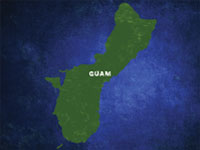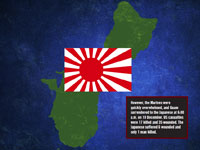BATTLE OF GUAM
12.08.41
0827 HOURS

A territory of the United States since the end of the Spanish-American War of 1898, Guam was a small Pacific island under the control of the American military at the time of its attack. Like Wake Island, Naval leadership believed that the defense of Guam was neither feasible nor necessary. In 1938, requests to fortify the island were denied due to what was seen as low importance in regards to other American territory in the area, as well as limitations originating from the Washington Naval Conference. After brave but token resistance on the part of a small garrison of Marines and the native Guam Insular Force, armed only with antiquated rifles and pistols, Capt. George McMillin, acting governor of the island, surrendered it on 10 December.
ORAL HISTORY
Ray H. Church
(b. 1920)
Branch: United States Marine Corps
Rank: Private First Class
Age: 21
Station: US Marine Detachment, Governor's Palace, Agana
Pfc. Ray Church was one of ten guards at the Governor's Palace in Guam's capital, Agana. From there, the men could see constant activity on the Japanese air base at Rota in the Marianas, but never thought much of it. Once the Japanese began bombing and strafing Guam on 8 December, Church patrolled the beach and found dozens of split-toe footprints immediately recognizable as those of Japanese frogmen who had clearly infiltrated the island. After short but brave resistance, Governor McMillin surrendered the island on 10 December, and Private First Class Church was taken prisoner with the rest of the garrison on Guam.
INTERACTIVE MAP
Watch the action unfold as the story of the invasion of Guam is told through interactive maps, oral histories and timelines.



